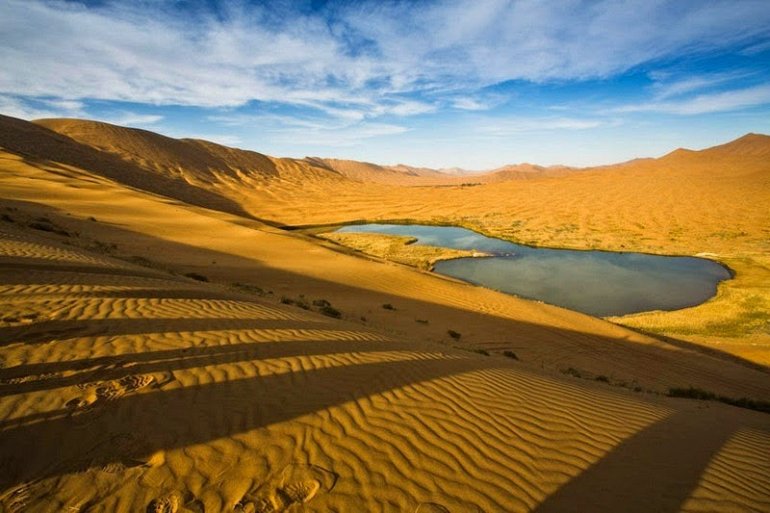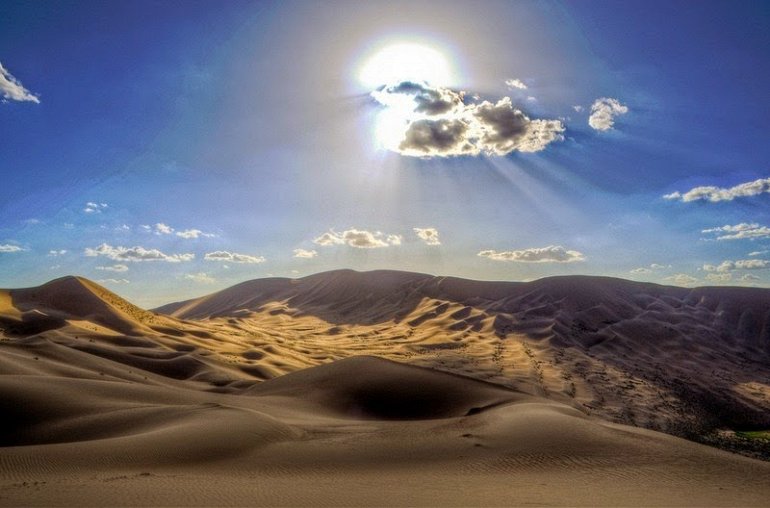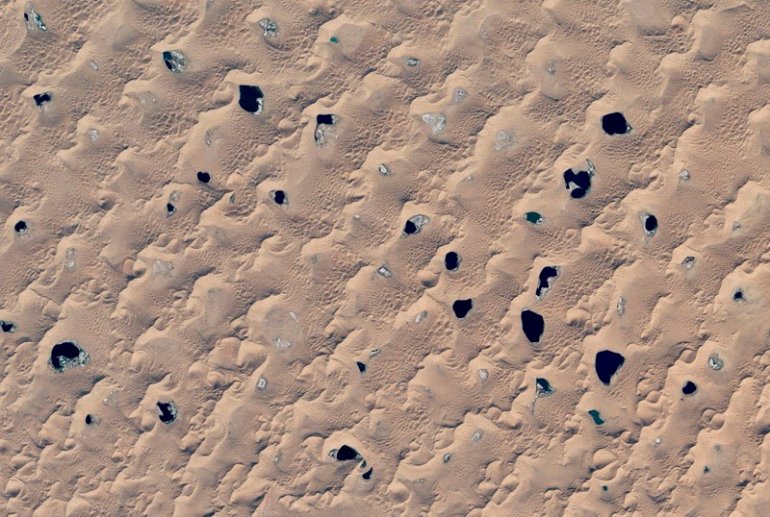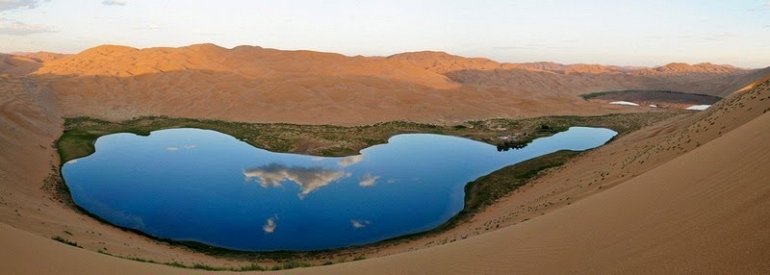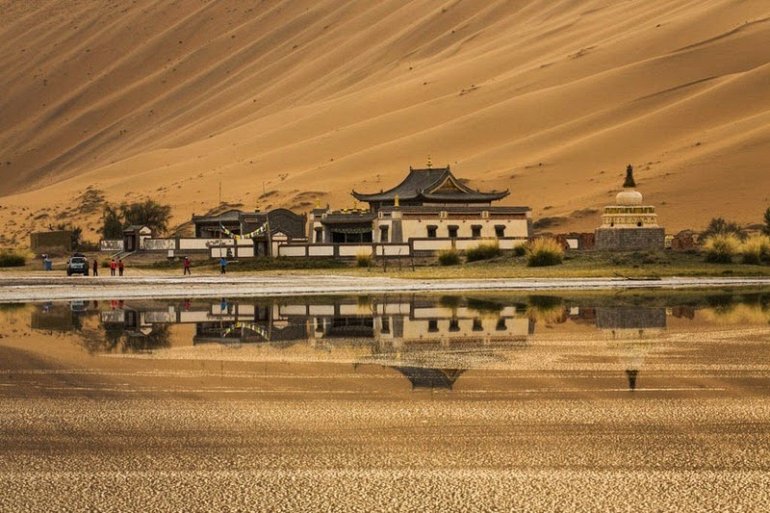The Badain Jaran Desert is well known for its numerous scattered and colorful lakes. Containing more than 140 lakes they are mainly found in the southern region in the desert. These lakes can easily be found in the larger valleys between large dunes. They are believed to provide the life sustenance in the desert supporting camels, goats and horses which are herded by nomads that travel through the desert. Most lakes also support a green ring of vegetation that populate the close vicinity around the lakes.
Throughout the desert some lakes change color due to large populations of algae, Brine shrimp and mineral formations at different times in year. Evaporation can also allow others to turn into a hypersaline lake forming a salt crust around the rim of the lake.
Although their true sources are still debated it is believed that they are being maintained by underground water streams. Most arid deserts in China are surrounded by mountains that provide water sources, and this is the case with the Badain Jaran Desert. Runoff from the mountains is then collected through gravel deposits and this allows them to run through the desert, providing water sources for the scattered oases.
Within the desert there can be two main types of lakes found regarding their morphometry. The largely elongated shallow lakes mainly appear in the megadune area in the southeastern margin of the desert. Their depth often reaches less than 2 meters (6 ft 7 in) and only measure about .2 square kilometres (0.077 sq mi). The oval-shaped, deep lakes can also be found in the compound transverse megadune area. Their maximum depth reaches around 15 meters (49 ft) and attain a maximum size of around 1.5 square kilometres (0.58 sq mi). The lake water can be extremely saline. The shallow lakes in the southeastern region of the desert tend to have low salt concentration, averaging at less than 20 grams per litre (0.00072 lb/cu in). Other lakes can show higher salt concentrations going up to more than 330 grams per litre (0.012 lb/cu in).




